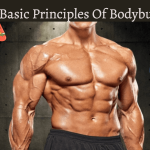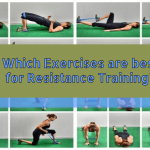When it comes to building muscle and achieving that sculpted physique, it’s not just about the weights you lift or the number of reps you do. Equally important is incorporating a well-rounded exercise routine that targets various muscle groups.
Among the plethora of exercises at your disposal, one category stands out as a powerhouse for muscle growth: Dips. Whether you’re a seasoned gym-goer or a newbie to the world of fitness, dips offer a versatile and effective way to challenge and strengthen your upper body.
In this blog post, we’ll explore the best types of dips exercises for grow muscles and unleash your full potential in the gym. Get ready to dip into the world of gains and discover the secrets to a more robust and muscular physique!
Best Types of Dips Exercises for Grow Muscles

Top 10 Dips Exercises
Parallel Bar Dips
Bench Dips
Ring Dips
Weighted Dips
Tricep Dips
Chest Dips
Assisted Dips
L-sit Dips
Negative Dips
Knee Dips
Parallel Bar Dips

Parallel bar dips are a classic upper-body strength exercise that target the chest, triceps, and shoulders. Here’s how to do them:
-
Setup: Position yourself between two parallel bars. Grip each bar tightly with your hands.
-
Starting Position: Push yourself up to an initial position where your arms are straight and your body is lifted off the ground. Keep your elbows close to your body.
-
Descent: Slowly lower your body by bending your elbows. Lean forward slightly as you descend to emphasize the chest or keep your body more upright to target the triceps more.
-
Bottom Position: Lower yourself until your elbows are at about a 90-degree angle or slightly lower. Avoid going too low as it can strain the shoulders.
-
Ascent: Push yourself back up by straightening your elbows, returning to the starting position.
-
Repeat: Perform the exercise for the desired number of repetitions.
Always ensure good form to maximize effectiveness and minimize the risk of injury. If you’re new to dips, start with fewer repetitions and focus on form before adding additional reps or weight.
Bench Dips

Bench dips are a bodyweight exercise that target the triceps and can be done almost anywhere with a sturdy bench or similar surface. Here’s a quick guide on how to perform them:
-
Position: Sit on the edge of a bench or chair and place your hands next to your hips, fingers gripping the edge.
-
Setup: Slide your buttocks off the bench with your legs extended in front of you. Your arms should be straight, supporting your weight.
-
Lowering: Slowly lower your body by bending your elbows until they’re at about a 90-degree angle. Keep your back close to the bench.
-
Lifting: Push through your palms to straighten your arms, lifting your body back to the starting position.
-
Repeat: Perform the desired number of repetitions.
Adjust the difficulty by bending your knees to bring your feet closer to your body for an easier version, or by placing your feet on another raised surface for a more challenging dip. Always be careful with your shoulder positioning to avoid strain.
Ring Dips

Ring dips are a challenging variation of the traditional dip exercise, performed with gymnastic rings instead of fixed parallel bars. The instability of the rings significantly increases the difficulty of the exercise, requiring and developing greater strength, stability, and coordination.
Here’s how to perform ring dips:
-
Ring Setup: Adjust the rings so they are at about waist height, allowing you to dip down without the rings touching the floor.
-
Starting Position: Grip the rings and jump up to get into the support position, with your arms straight and rings close to your body.
-
Stabilize: Before dipping, stabilize your body as the rings will tend to move. Keep your core tight and shoulders packed down.
-
Lowering Phase: Slowly lower your body by bending your elbows. Keep the movement controlled as the rings will try to sway.
-
Bottom Position: Lower yourself until your shoulders are just below your elbows. Avoid going too low as it puts unnecessary stress on the shoulder joints.
-
Pressing Up: Push down on the rings, extending your arms to lift your body back up to the starting position.
-
Repeat: Perform the desired number of repetitions.
Due to the increased difficulty, it’s important to have mastered regular dips and have a good level of upper body strength before attempting ring dips. Additionally, it’s beneficial to practice ring support holds to build stability before adding the dipping motion.
Weighted Dips

Weighted dips are an advanced variation of the traditional dip exercise where additional weight is added to increase the intensity. This is typically done using a dip belt, a weighted vest, or by holding a dumbbell between the feet or knees.
Here’s how to perform weighted dips:
-
Equipment: Secure the additional weight to your body. If using a dip belt, loop it through the weight plate and fasten it around your waist. If using a dumbbell, clamp it between your crossed ankles or knees.
-
Position: Approach the parallel bars and grip them firmly.
-
Starting Position: Push yourself up to an initial position where your arms are straight, supporting both your body weight and the additional weight.
-
Descent: Inhale as you slowly lower your body by bending your elbows. You can lean forward slightly to engage more of the chest muscles, or stay upright to focus on the triceps.
-
Bottom Position: Lower yourself until your elbows are bent at about a 90-degree angle. Avoid going much lower to prevent shoulder strain.
-
Ascent: Exhale and push down on the bars to straighten your elbows, lifting yourself back to the starting position.
-
Repeat: Complete the desired number of reps, maintaining controlled movement throughout.
Before attempting weighted dips, it’s crucial to be comfortable with bodyweight dips and have a solid base of upper body strength to prevent injury. It’s also important to use a weight that is manageable and to progress gradually.
Tricep Dips

Tricep dips are a bodyweight exercise focused on strengthening the triceps muscles along with the shoulders and the chest. Here’s how to perform them with a bench, chair, or sturdy platform:
-
Setup: Sit on the edge of a bench or chair with your hands next to your thighs, fingers gripping the edge.
-
Starting Position: Move your feet forward and slide your rear off the bench, supporting your weight with your arms. For more intensity, extend your legs out; for less, bend your knees.
-
Descent: Lower your body by bending your elbows, keeping them pointed straight back and close to your sides.
-
Bottom Position: Go down until your elbows form about a 90-degree angle. Avoid dropping too low to keep stress off the shoulder joints.
-
Push Up: Straighten your elbows to lift your body back up to the starting position, focusing on using your triceps.
-
Repeat: Perform the desired number of repetitions.
To ensure that you’re targeting the triceps, keep your body close to the bench throughout the movement. The further your feet are from the bench, the more challenging the exercise becomes. Always perform the movement with control to avoid strain and injury.
Chest Dips

Chest dips are a variation of the traditional dip exercise, with a slight modification in body position to put more emphasis on the pectoral muscles. Here’s how to perform them:
-
Equipment: Use parallel bars or a dip station.
-
Starting Position: Grip the bars and push yourself up to a straight-arm position.
-
Body Tilt: As you lower yourself, lean your torso slightly forward. This forward lean shifts the focus to the chest muscles.
-
Lowering Phase: Inhale and bend your elbows to lower your body. Keep your elbows slightly flared out to the sides.
-
Depth: Lower down until your shoulders are slightly below your elbow level or until you feel a good stretch in your chest. Do not go too low as it can be hard on your shoulders.
-
Pushing Up: Exhale as you press yourself back up to the starting position, driving mainly with your chest muscles.
-
Repeat: Complete the desired number of reps with good form.
It’s important to ensure you’re comfortable with regular dips and have adequate shoulder flexibility and strength before progressing to chest dips due to the additional strain on the shoulders and chest.
Assisted Dips

Assisted dips are a version of dips that are modified to be less challenging, allowing individuals who cannot perform a full bodyweight dip to still engage in the exercise and build their strength over time. They can be performed using an assisted dip machine, resistance bands, or with the help of a spotter. Here’s a general guide for performing assisted dips with a machine:
-
Machine Setup: Adjust the weight on the assisted dip machine to counterbalance your body weight. The more weight you select, the more assistance you’ll receive.
-
Starting Position: Stand on the platform or kneel on the knee pad, depending on the machine design. Grip the handles.
-
Assistance: The selected weight will help lift you as you perform the dip, making it easier to push up.
-
Lowering Phase: Lower your body by bending your elbows until they’re at about a 90-degree angle.
-
Pushing Up: Push down on the handles to straighten your arms and lift your body back to the starting position, with the machine assisting you as needed.
-
Repeat: Perform the desired number of reps, maintaining a controlled movement throughout the exercise.
For band-assisted dips, a large looped resistance band is typically placed over the bars and under your knees or feet to help support your weight during the exercise.
The key with assisted dips is to use just enough assistance to perform the dip with good form while still challenging your muscles, and to gradually decrease the assistance over time as your strength increases.
L-sit Dips

L-sit dip is an advanced exercise that combines a standard dip with an L-sit hold. Here’s how you do it:
- Start Position: Grip the parallel bars and lift yourself up with arms extended and legs straight out in front to form an “L” shape.
- Dip Down: Lower your body by bending your elbows to about 90 degrees, keeping legs raised.
- Push Up: Extend your arms to lift your body back to the start position, maintaining the L-sit.
- Repeat: Continue for the desired number of reps, keeping the L-sit throughout the exercise.
It targets the triceps, chest, shoulders, and core, and requires significant strength and stability.
Negative Dips

Negative dips focus on the downward phase of the dip exercise. Here’s a concise guide:
- Start: Begin at the top of a dip with arms fully extended.
- Lower Slowly: Gradually lower your body with control, emphasizing the eccentric phase.
- Bottom Position: Reach the bottom of the dip but don’t push back up.
- Assist: Use your legs or a platform to return to the start without performing the upward dip phase.
- Repeat: Perform several reps, focusing on the slow, controlled descent.
Negative dips build strength by targeting the muscles used in the lowering portion of the dip, primarily the chest, triceps, and shoulders.
Knee Dips

Knee dips might refer to a modified version of the traditional dip exercise to make it more accessible or to target different muscles. Here’s a basic way to perform knee dips:
-
Position: Stand between parallel bars or facing a dip station. Grip the bars and push yourself up to the starting position with your arms straight.
-
Knee Bend: Instead of keeping your legs straight or crossed behind you, bend your knees at a 90-degree angle.
-
Lower Your Body: Bend your elbows and lower your body down until your upper arms are about parallel to the floor. Your knees should remain bent throughout the motion.
-
Press Up: Push through your hands to straighten your arms, lifting your body back to the starting position.
-
Repeat: Do the desired number of repetitions.
This variation may help reduce the strain on your shoulder joints and can also slightly reduce the body weight you’re lifting, making the exercise somewhat easier than straight-leg dips. It can be a good way to build up strength if you’re new to dips or as a progression if you’re working towards full bodyweight dips.
Frequently Asked Questions
Best types of dip exercise for build muscle at home?
The best types of dip exercises for building muscle at home include Bench Dips, Parallel Bar Dips, Straight Bar Dips, Korean Dips, and Ring Dips. These exercises can be done without specialized equipment and are effective in targeting various muscle groups, helping you achieve your muscle-building goals in the comfort of your home.
Best types of dip exercise for build muscle female?
The best types of dip exercises for building muscle in females include Bench Dips, Parallel Bar Dips, and Ring Dips. These exercises are effective in strengthening the upper body and can help women achieve their muscle-building goals.
Best types of dip exercise for build muscle with weights?
The best types of dip exercises for building muscle with weights include Bench Dips and Tricep Dips (weighted). These exercises, when combined with other weightlifting movements like curls and extensions, create effective supersets to target the triceps and build muscle using added resistance.
Types of dips exercise for chest?
The types of dip exercises that target the chest include Chest Dips (Gironda Dips) and Wide-Grip Dips. These variations are effective in working the chest muscles and can be incorporated into your workout routine for chest development.
Dips workout what muscles?
Dips primarily work the triceps and chest muscles. The way you perform the exercise can emphasize either your chest or triceps more. Chest dips target the chest when leaning the body forward, while tricep dips focus on the triceps with a more upright torso position.
Dips exercise at home?
To do dips at home, you’ll need two sturdy surfaces (like chairs or parallel bars). Here’s how:
- Place the surfaces shoulder-width apart.
- Stand facing away from them.
- Grip the surfaces with palms down.
- Walk your feet forward.
- Bend your elbows, lowering your body.
- Push back up.
Maintain good form, engage your core, and start with a few sets, increasing reps as you progress. Dips are a great bodyweight exercise for strength.
Conclusion
In conclusion, the world of fitness offers a multitude of exercises to help you achieve your muscle growth goals, but dips are undoubtedly a standout choice. We’ve delved into some of the best types of dip exercises in this blog post, highlighting their versatility and effectiveness in targeting various muscle groups, particularly the chest, triceps, and shoulders.
Whether you prefer parallel bar dips, bench dips, or weighted dips, incorporating these exercises into your workout routine can lead to remarkable gains in muscle strength and size.
Remember, consistency and proper form are key, so take your time to master these techniques, and soon you’ll be on your way to a more muscular and powerful physique. So, dip into these workouts, push your limits, and watch your muscles flourish!














